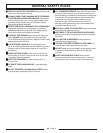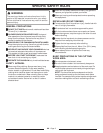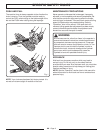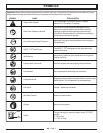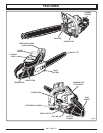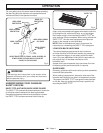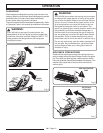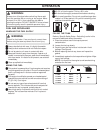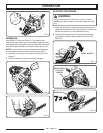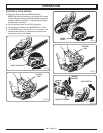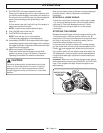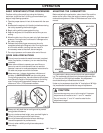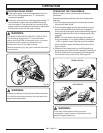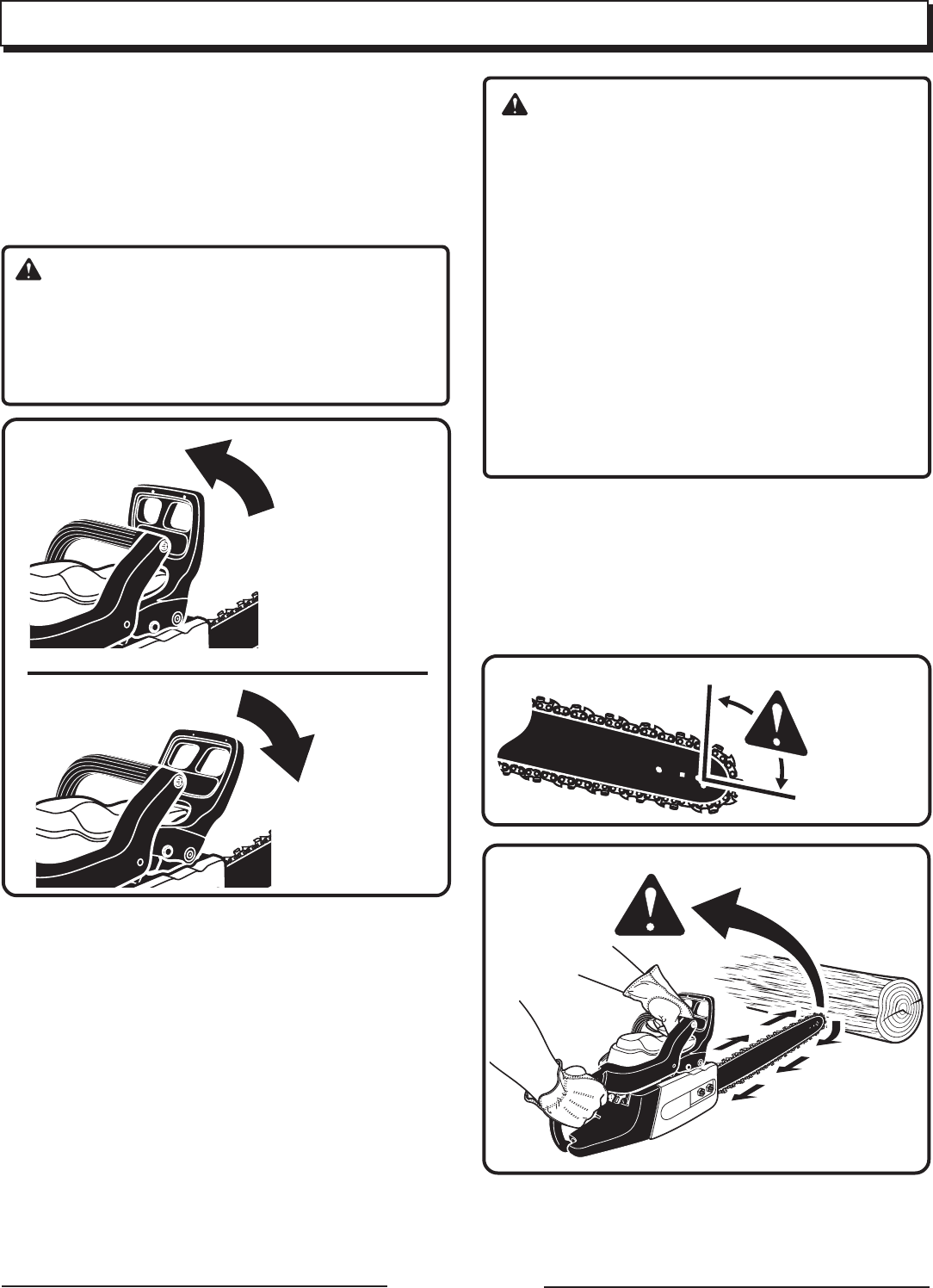
UK - Page 12
CHAIN BRAKE
Chain brakes are designed to quickly stop the chain from
rotating. When the chain brake lever/hand guard is pushed
towards the bar, the chain should stop immediately.
A chain brake does not prevent kick-back.
The chain brake should be cleaned and tested daily. Refer
to “Operation” later in this manual for additional information.
RUN POSITION
BRAKE
POSITION
Fig. 5
WARNING:
KICK-BACK occurs when the moving chain contacts
an object at the upper portion of the tip of the guide
bar or when the wood closes in and pinches the saw
chain in the cut. Contact at the upper portion of the
tip of the guide bar can cause the chain to dig into
the object and stop the chain for an instant. The
result is a lightning-fast, reverse reaction which kicks
the guide bar up and back towards the operator. If
the saw chain is pinched along the top of the guide
bar, the guide bar can be driven rapidly back toward
the operator. Either of these reactions may cause
loss of saw control which can result in serious injury.
Do not rely exclusively upon the safety devices built
into the saw. As a chainsaw user, you should take
several steps to keep your cutting jobs free from
accident or injury.
OPERATION
WARNING:
Even with daily cleaning of the mechanism, the
dependability of a chain brake to perform under field
conditions cannot be certified. Keep the SAFE-T-TIP
nose guard on the saw guide bar and use proper
cutting techniques.
ROTATIONAL
KICK-BACK
Fig. 7
KICK-BACK PRECAUTIONS
Rotational kick-back occurs when the moving chain con-
tacts an object at the Kick-back Danger Zone of the guide
bar. The result is a lightning-fast, reverse reaction which
kicks the guide bar up and back towards the operator. This
reaction may cause loss of control which can result in
serious injury.
KICK-BACK DANGER
ZONE
Fig. 6



